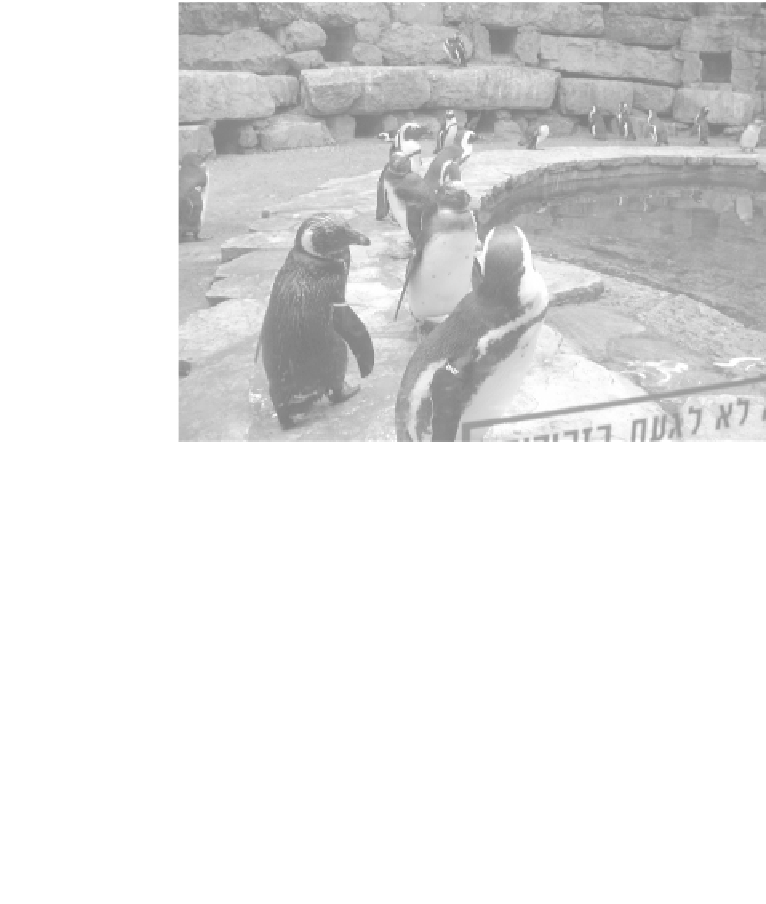Geoscience Reference
In-Depth Information
This is an image of black-footed penguins seen through thick glass at Jerusalem Zoo (kindly donated
by Irus Braverman). In her book
Zooland
, Braverman writes that 'The most crucial assumption under-
lying the entire institution of captivity is the classification of zoo animals as wild and therefore as
representatives of unconfined conspecifics' (Braverman, 2012: 6). I believe she's correct. Though we,
as zoo and wildlife park visitors, well understand the artificiality of the space we meander through,
we also arguably see the captive species as literal and metonymic representations of whole species
existing 'out there' in the 'wild'. This 'reality effect' is all the more potent for us being physically close
to
living
creatures, rather than mere images of these living creatures. What's more, zoos in particular
have worked hard over the past 25 years to create a more 'naturalistic' experience for visitors.
This is an image ofblack-footed penguins seen through thick glass at Jerusalem Zoo (kindly donated
by Irus Braverman). In her book
Zooland,
Braverman writes that 'The most crucial assumption under-
lying the entire institution of captivity is the classification of zoo animals as wild and therefore as
representatives of unconfined conspecifics' (Braverman, 2012: 6). I believe she's correct. Though we,
as zoo and wildlife park visitors, well understand the artificiality of the space we meander through,
we also arguably see the captive species as literal and metonymic representations of whole species
existing 'out there' in the 'wild'. This 'reality effect' is all the more potent for us being physically close
to
living
creatures, rather than mere images of these living creatures. What's more, zoos in particular
have worked hard over the past 25 years to create a more 'naturalistic' experience for visitors.
it's profoundly shaped by the narratives, knowledges and technologies that
enable experience' (Braun, 2002: 15).
This said, some forms of engagement with the non-human world yield
knowledge and skill that aren't 'shaped' in the sociocultural sense that Braun
intends. A smallholder working the land is not, it almost goes without say-
ing, experiencing nature in the same sense as an occasional wildlife park
visitor is. But, in the West today, how many of us are relating to the non-
human world in this direct, practical sense? The majority of people lead lives
that offer few opportunities for sustained physical interaction with land,
water or other species.
SUMMARY
This chapter has advanced three principal arguments. First, it's been sug-
gested that we derive much (most?) of what we know, value and feel about
'natural' phenomena from various epistemic communities. In large measure,
we're rendered dependent on them, so I've claimed - cognitively, morally

